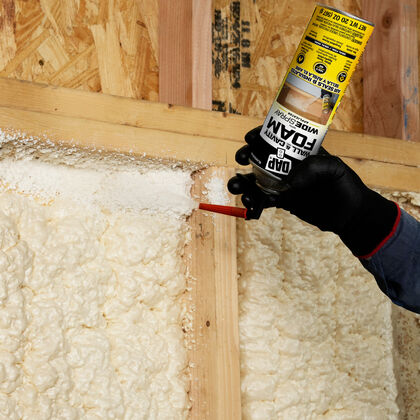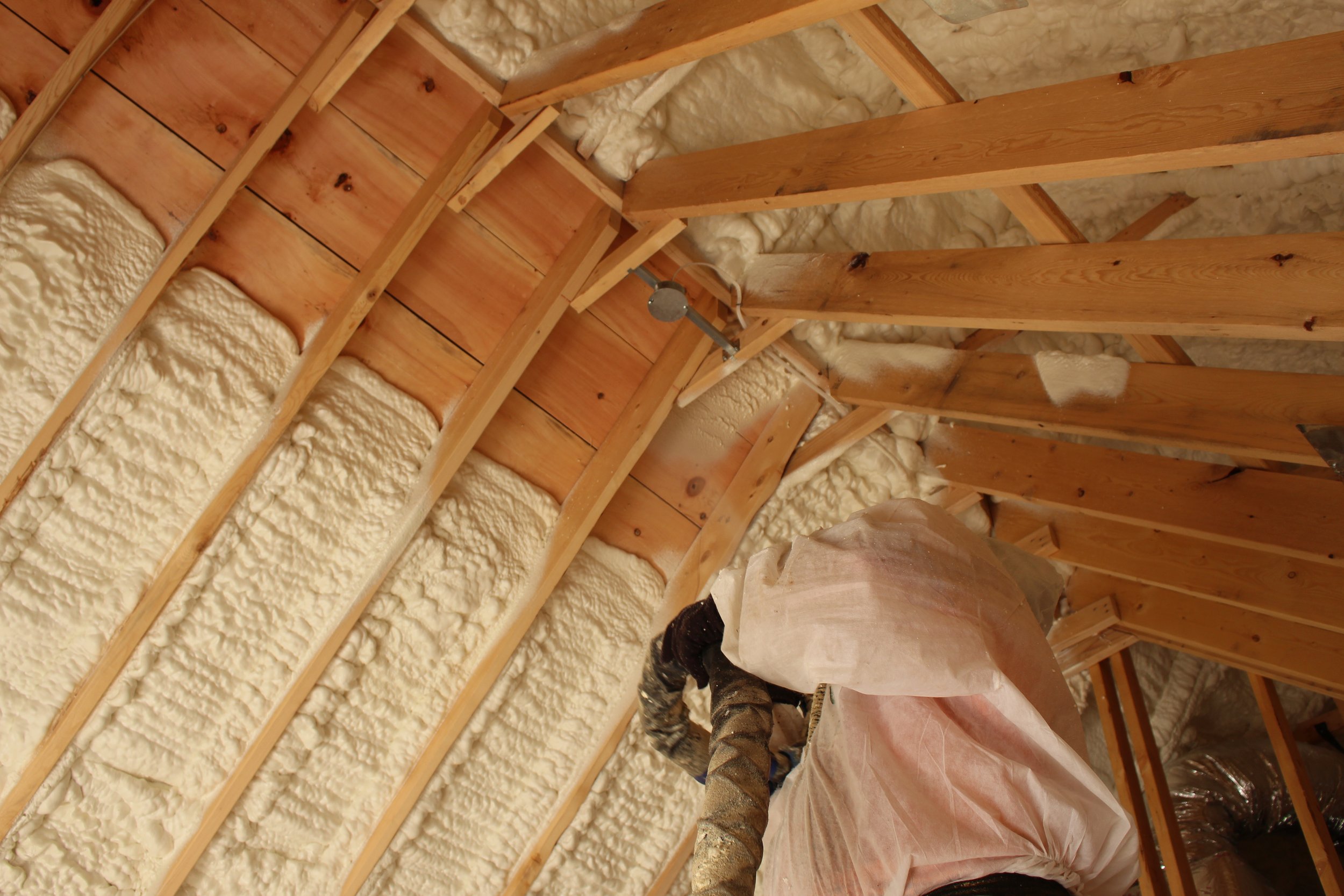Common Misconceptions About Spray Foam: Debunking the Misconceptions
Common Misconceptions About Spray Foam: Debunking the Misconceptions
Blog Article
Spray Foam: The Ultimate Service for Air Sealing and Insulation
Spray foam insulation has arised as a leading remedy for efficient air sealing and thermal insulation, supplying a special combination of residential properties that set it in addition to traditional techniques. Its capacity to increase and fill up spaces makes it especially reliable in preventing air leakage, which can significantly affect power effectiveness. Comprehending the complete extent of its advantages, installment processes, and comparisons with various other insulation types is critical for making notified choices. As we check out these aspects, the ramifications for both brand-new building and constructions and retrofits become significantly considerable. What aspects should affect your selection?
What Is Spray Foam?
Spray foam is a versatile insulation material that integrates the concepts of air sealing and thermal resistance to improve power efficiency in structures. Composed mainly of polyurethane or other similar compounds, spray foam is applied as a fluid that increases upon contact with surfaces, developing a solid, continuous layer of insulation. This distinct residential property allows it to fill gaps, cracks, and voids that typical insulation materials might neglect, offering an exceptional air seal.
There are 2 main kinds of spray foam: open-cell and closed-cell. Open-cell spray foam is lighter and more versatile, providing exceptional audio absorption and a lower R-value per inch - Spray Foam. On the other hand, closed-cell spray foam is denser, providing a greater R-value, wetness resistance, and added structural stability to developing elements
The application procedure commonly entails specific devices, making certain a smooth application that complies with numerous substrates, including metal, concrete, and wood. This adaptability makes spray foam suitable for both new buildings and retrofitting existing structures. Its ability to produce an airtight obstacle significantly contributes to decreasing power usage and boosting interior air quality, consequently making it a favored selection among home builders and home owners alike.
Advantages of Spray Foam Insulation
Among the most substantial advantages of spray foam insulation is its phenomenal ability to produce a constant air barrier, which effectively minimizes power loss. Unlike typical insulation materials, spray foam broadens to fill voids and splits, ensuring that air leakage is significantly minimized. This particular not just enhances energy efficiency but also leads to decrease energy bills with time.
In addition, spray foam insulation offers exceptional thermal resistance, contributing to an extra steady indoor environment. Its high R-value per inch permits for effective insulation in confined spaces, making it suitable for attic rooms, wall surfaces, and crawl spaces. The moisture-resistant residential or commercial properties of spray foam help stop mold and mildew development, promoting healthier living conditions.
Another crucial advantage of spray foam insulation is its sound-dampening top qualities (Spray Foam). It successfully reduces sound transmission in between areas, developing a quieter and extra comfortable home atmosphere. The longevity of spray foam also attracts attention, as it does not sag or resolve over time, keeping its performance throughout its lifespan
How Spray Foam Functions
Recognizing how spray foam insulation functions is important for valuing its performance in air sealing and thermal resistance. Spray foam insulation contains 2 key components: isocyanate and polyol material. When these elements are combined, they undergo a chemical reaction that creates the material to increase rapidly, creating a thick foam that loads spaces, splits, and cavities.
As the foam broadens, it complies with surface areas, developing an impermeable seal that significantly decreases air infiltration. This particular makes spray foam insulation very efficient at avoiding drafts and dampness infiltration, which can bring about power loss and damages gradually. Additionally, the closed-cell version of spray foam provides superior thermal resistance due to its stiff framework, successfully minimizing warm transfer.
The one-of-a-kind homes of spray foam permit it to conform to irregular surfaces, making certain detailed protection and a smooth barrier. As a result, spray foam insulation not only enhances power performance however additionally adds to boosted interior air top quality by reducing the buildup of toxins and irritants. Inevitably, comprehending the technicians behind spray foam highlights its duty as a premium selection for insulation and air securing in both domestic and commercial applications.
Setup Process Introduction

Prior to installment, the area needs to be effectively cleaned and prepped, ensuring that surfaces are devoid of dirt, wetness, and debris. Since contaminants can endanger bond and general efficiency, this step is critical. When the area is prepared, the application involves mixing both elements of the spray foam, which expands upon contact and loads gaps successfully.
Trained experts need to carry out the installation, using specific equipment to make certain uniform coverage and optimal thickness. Safety and security precautions, including using safety equipment and making sure appropriate air flow, are essential throughout this process. After application, the foam generally cures quickly, forming a strong barrier that boosts power performance.
Contrasting Spray Foam to Traditional Insulation
When evaluating insulation alternatives, spray foam insulation stands out in comparison to standard products such as fiberglass and cellulose. Unlike fiberglass and cellulose, which can enable air infiltration, spray foam increases upon application, loading gaps and voids to develop an airtight seal.
Furthermore, spray foam gives a greater R-value per inch than conventional insulation kinds, providing more efficient thermal resistance in a thinner account. This particular is especially helpful in spaces with restricted tooth cavity depth. Additionally, spray foam is immune to dampness and mold and mildew growth, which can be a significant worry about cellulose and visit our website fiberglass, especially in damp environments.
Nevertheless, spray home foam insulation commonly carries a greater in advance expense than its standard counterparts. Property owners need to consider this first investment against long-lasting power savings and efficiency advantages. Eventually, while both insulation types offer their objective, spray foam arises as an advanced service for modern-day insulation needs, especially in terms of air sealing and thermal effectiveness.

Verdict
In recap, spray foam insulation stands for an extremely reliable remedy for accomplishing ideal air sealing and thermal resistance. Its unique properties, including wetness resistance and audio dampening, make it suitable for different applications in both new constructions and retrofitting tasks (Spray Foam). Although the initial costs may be greater contrasted to traditional insulation products, the long-lasting advantages, such as significant energy savings and enhanced indoor air high quality, warrant the investment and highlight its value in modern building techniques.
Spray foam insulation has arised as a leading solution for effective air sealing and thermal insulation, using a distinct combination of residential or commercial properties that establish it apart from typical approaches.Spray foam is a functional insulation product get redirected here that incorporates the concepts of air securing and thermal resistance to enhance energy efficiency in structures.When assessing insulation alternatives, spray foam insulation stands out in contrast to standard materials such as fiberglass and cellulose. Eventually, while both insulation types offer their objective, spray foam arises as a more innovative remedy for contemporary insulation demands, especially in terms of air securing and thermal efficiency.
In recap, spray foam insulation represents an extremely effective option for attaining optimum air securing and thermal resistance.
Report this page